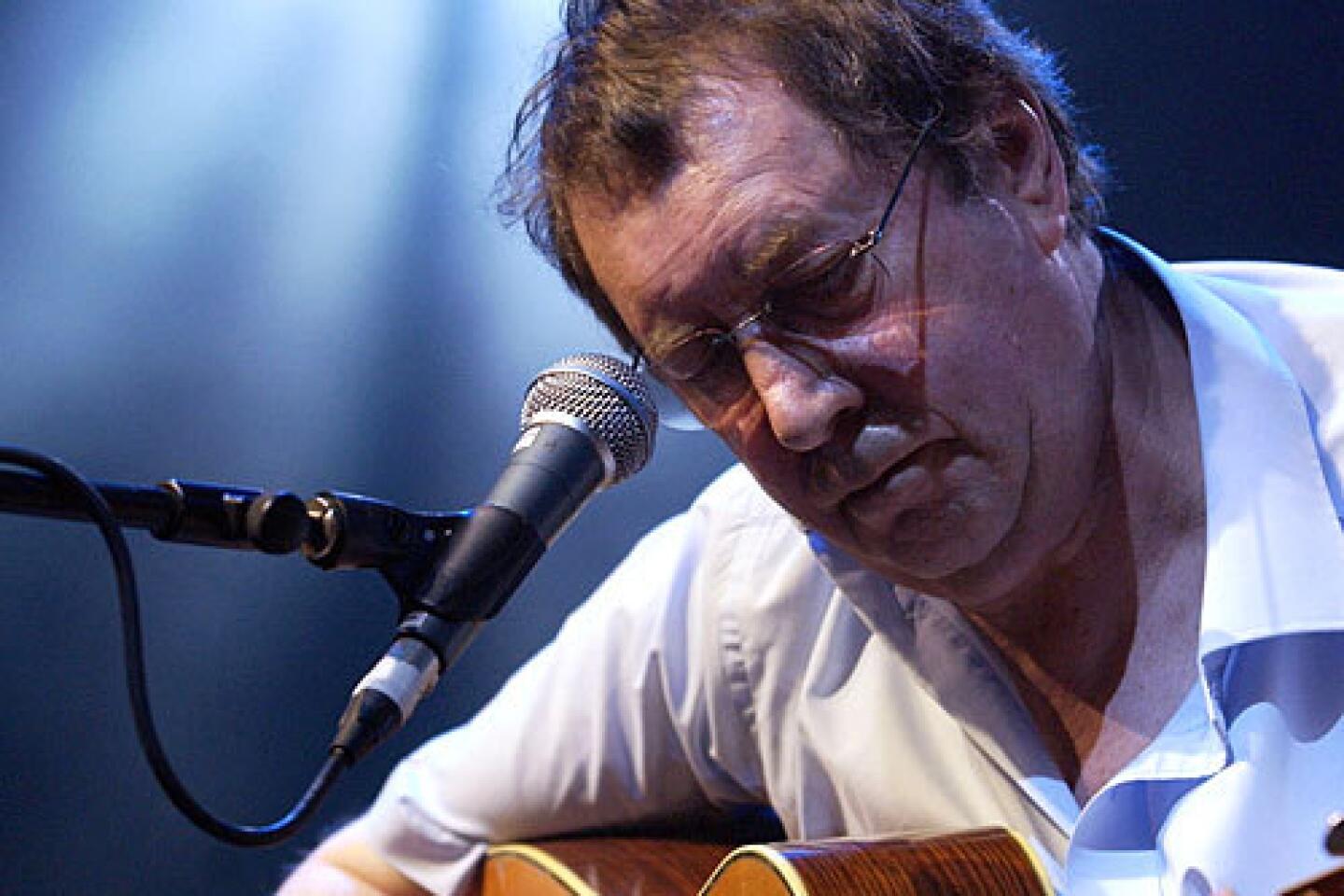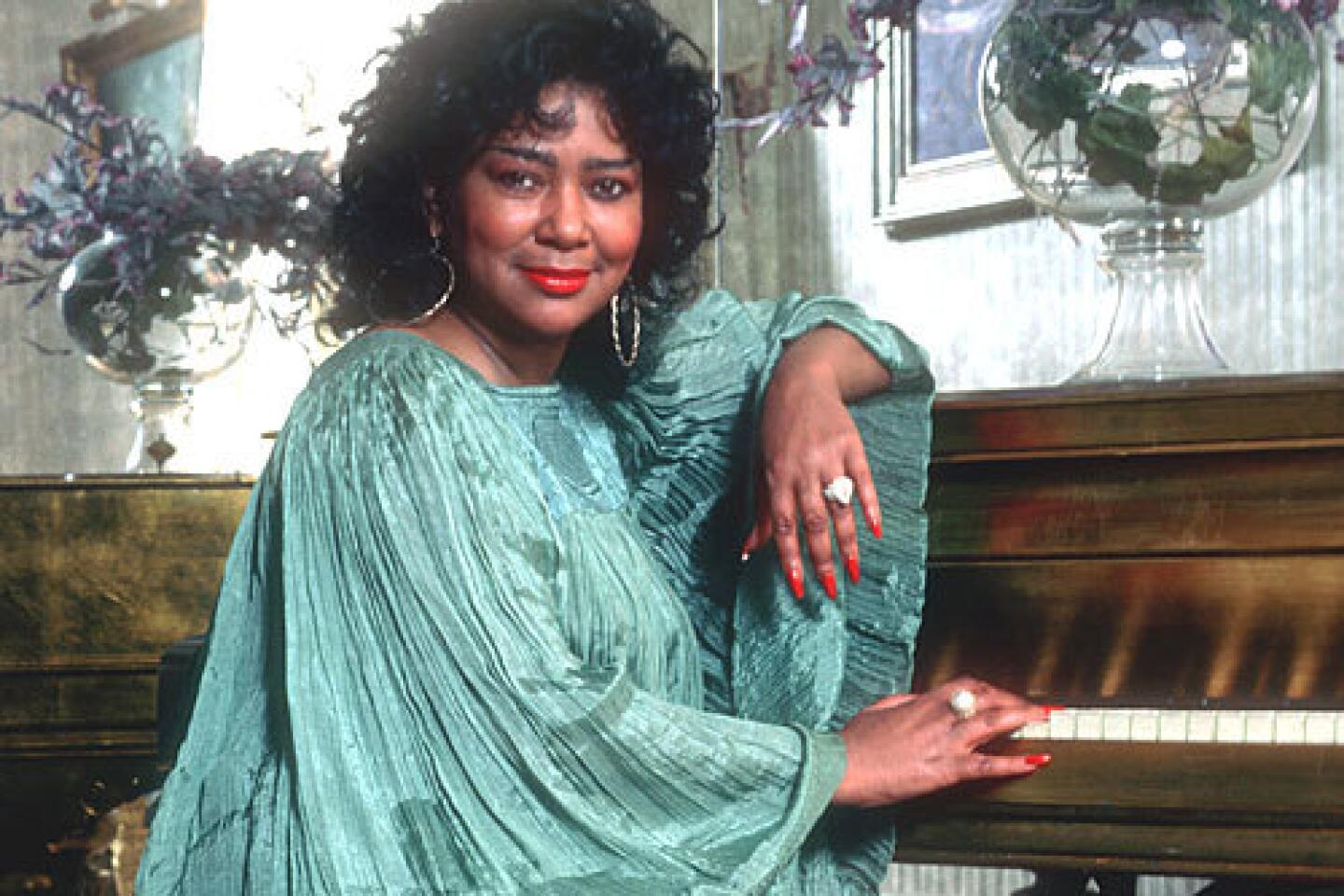Suze Rotolo dies at 67; Bob Dylan’s girlfriend was on iconic album cover
- Share via
Suze Rotolo, Bob Dylan’s former girlfriend in Greenwich Village in the early 1960s, who appeared walking arm-in-arm with him on the iconic cover of his album “The Freewheelin’ Bob Dylan,” has died. She was 67.
Rotolo, who played a role in the young Dylan’s evolution as a singer-songwriter and later had a career as an artist, died of cancer Friday at home in Greenwich Village, said her son, Luca Bartoccioli.
FOR THE RECORD:
Suze Rotolo: In the March 1 LATExtra section, a headline on the obituary for Suze Rotolo, Bob Dylan’s former girlfriend in the early 1960s, said she died in 2010. Rotolo died Feb. 25, 2011. —
She was a 17-year-old art- and poetry-loving civil rights activist from Queens when she met the 20-year-old folk singer from Minnesota at an all-day folk concert at Riverside Church in Manhattan in the summer of 1961.
“Right from the start, I couldn’t take my eyes off her,” Dylan wrote in “Chronicles: Volume One,” his 2004 memoir. “She was the most erotic thing I’d ever seen.”
Rotolo later wrote that Dylan “made me think of Harpo Marx, impish and approachable, but there was something about him that broadcast an intensity that was not to be taken lightly.”
So began a four-year relationship that was immortalized on a wintery day in 1963 when photographer Don Hunstein captured the young couple walking down a snowy Greenwich Village street, Dylan’s hands thrust in his pockets and Rotolo’s hands wrapped snuggly around his arm.
“It was freezing out,” she recalled in a 2008 interview with the New York Times. “He wore a very thin jacket, because image was all. Our apartment was always cold, so I had a sweater on, plus I borrowed one of his big, bulky sweaters. On top of that I put a coat. So I felt like an Italian sausage.”
The photo became the cover of Dylan’s breakthrough second album, which includes the songs “Blowin’ in the Wind,” “A Hard Rain’s A-Gonna Fall,” “Don’t Think Twice, It’s All Right” and “Masters of War.”
“The Freewheelin’ Bob Dylan” also inspired the title for Rotolo’s 2008 memoir, “A Freewheelin’ Time: A Memoir of Greenwich Village in the Sixties,” which reviewers praised for capturing the era’s Bohemian atmosphere.
“She was happy she came out with it because it kind of helped satisfy people’s curiosity about what went on” with her relationship with Dylan, Rotolo’s son said Monday. But, he added, the book is “about her life — about who she was — and not being just this guy’s girlfriend.”
Rotolo was born in Queens, N.Y., on Nov. 20, 1943, a so-called red-diaper baby whose parents were members of the American Communist Party. Her father died when she was a teenager, and she traded Queens for Greenwich Village after graduating from high school.
She was working in the office of the Congress of Racial Equality — and had seen Dylan perform at a small club in the Village — when she met him at the folk festival.
Rotolo, who moved into a tiny apartment on West Fourth Street in the Village with Dylan when she was 18, is credited with introducing him to modern art and poetry, avant-garde theater and civil rights politics.
“You could see the influence she had on him,” Sylvia Tyson, of Ian & Sylvia, recalled in a 2008 interview with the Los Angeles Times. “This is a girl who was marching to integrate local schools when she was 15.”
Some rock historians, The Times’ story noted, believe Rotolo inspired numerous Dylan songs, including “Don’t Think Twice, It’s All Right” and “Tomorrow Is a Long Time.”
“She’ll tell you how many nights I stayed up and wrote songs and showed them to her and asked her: ‘Is this right?’ ” Dylan told his biographer Robert Shelton. “Because I knew her father and mother were associated with unions and she was into this equality-freedom thing long before I was.”
After time apart studying art in Italy for six months in 1962, Rotolo resumed her relationship with Dylan. But as his career took off, she found herself unwilling to be just a “string on Dylan’s guitar.”
“Suze was her own person, who loved this guy very much,” blues singer Maria Muldaur told the L.A. Times in 2008. “Suddenly people were stepping over her, pushing her aside to talk to him.”
Describing Dylan in her book as “a beacon and a black hole,” Rotolo wrote that he “had this intensity about him, and you got sucked in. I certainly felt that, as his girlfriend, I disappeared and became a non-entity. Even if he didn’t see me that way, that’s what happened. That was always a struggle.”
Their relationship ended after about four years.
“We loved each other very much and when it ended it was mutual heartbreak,” she wrote in her memoir. “He avoided responsibility. I didn’t make it easy for him either.... I knew I was not suited for his life.”
In 1967, Rotolo married Italian-born Enzo Bartoccioli.
Bartoccioli, a film editor, said he understands the enduring interest in his wife’s famous album-cover photo with Dylan.
“She became an icon; nobody cares about anything else,” he said, noting that his wife described Dylan in her book as “the elephant in the room of my life.”
“Meaning,” he said, that everyone was interested in asking her about Dylan, “and no one asks, ‘How are you?’ People forget she was a person by her own.”
His wife, Bartoccioli said, “was very happy” being an artist.
“She was not famous in her own, but she always managed to more or less make a good living,” he said. “She enjoyed very, very much what she was doing.”
J. Hoberman, a senior film critic at the Village Voice who had known Rotolo since the early ‘80s, said she “was herself a strong and compelling personality.”
“To me, she had an interesting life, of which Dylan was part,” he said. “But her account of the whole folk music revival in the early ‘60s is much more than being about him. She was somebody who was part of that scene.”
And it was an era that mattered, Rotolo wrote in her book, because “we all had something to say, not something to sell.”
In addition to her husband and son, she is survived by a sister, Carla Rotolo.
More to Read
Start your day right
Sign up for Essential California for the L.A. Times biggest news, features and recommendations in your inbox six days a week.
You may occasionally receive promotional content from the Los Angeles Times.
















